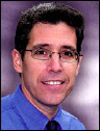Radio frequency identification is catching on all over the place. Companies in a wide variety of industries are finding ways to use it to improve their operations. That’s the good news. The bad news is that there is a growing danger that standards bodies in different industries will adopt conflicting standards for air-interface protocols and data structures. Worse, it’s possible that different groups within the same industry could adopt incompatible standards. We’re in danger of creating a tower of RFID babble.
Here are just some of the groups currently working on RFID standards:
- American National Standards Institute (ANSI)
- ASTM International
- Auto Industry Action Group (AIAG)
- European Committee for Standardization (CEN)
- European Conference of Postal and Telecommunications Administrations (CEPT)
- EPCglobal
- European Telecommunication Standards Institute (ETSI)
- International Air Transport Association (IATA)
- International Organization for Standardization (ISO)
- Universal Postal Union (UPU)
- Voluntary Industry Commerce Standards Association (VICS)
EPCglobal is promoting the Electronic Product Code as a single method for tracking goods in the global supply chain, regardless of industry. EPCglobal would like to see all industries use a single air-interface protocol, which means everyone could use the same tags and interrogators, and a single numbering system—which means people could share data with business partners, regardless of their industry.
Two weeks ago, I wrote about the benefits and challenges of adopting a single numbering scheme across industries (see A Clarion Call for One RFID Standard). A single air-interface protocol, or at least compatible air-interface standards, is even more important. Without it, companies would need to put different types of RFID tags on their products, depending on whom they are shipping to, and they would need to buy more sophisticated interrogators that could read any tag, regardless of protocol.
Tire manufacturers were among the first to discover the potential problem. Companies such as Michelin sell to retailers, carmakers, airplane manufacturers and the military. When the AIAG first adopted an RFID standard for tracking tires, it was incompatible with the UHF EPC system being adopted by Wal-Mart and others. This forced the AIAG to rethink things, and it decided to go with EPC as the standard for tagging tires.
In the airline industry, you could have different groups introducing standards for different applications. IATA could introduce one standard for tracking parts and baggage, but there could be other standards for tracking shipments in the supply chain, tires that go on planes, passports, loyalty cards and so on. Companies might need to invest in three or four different interrogators—or more expensive multi-frequency, multi-protocol interrogators—to read all the tags in their operations.
The problem will get even worse as RFID technology proliferates. Let’s say the world’s postal service providers decide to adopt one standard for the reusable transport containers they use, and Federal Express, DHL and other courier companies adopt a different standard. And IATA adopts yet another standard for unit load devices and airline baggage. You could wind up with airlines needing to read four or five different types of tags on items going into the belly of a plane, and each type of interrogator would require its own integration with back-end systems.
This is a bad thing for everyone for several reasons. First, the price of RFID tags will only fall if there are large enough volumes to drive efficiencies. You could conceivably pay 5 cents for a tag that’s manufactured in the billions, but we’ll never get to the billions of any one tag if everyone is using a different tag type.
Another problem is the cost of managing different types of interrogators. It will be expensive to manage a network of UHF interrogators. However, the cost and complexity increase dramatically if you need to have multi-protocol UHF and 13.56 MHz interrogators.
It will never be possible to have one tag and one protocol for all applications. RFID simply isn’t a one-size-fits-all technology. Still, it’s in everyone’s interest to try to keep the number of air-interface protocol standards, tag data standards and application standards (which establish what to tag, where to tag it and so on) to the minimum. The whole point of standards, after all, is to make it easier for companies to do business with one another.
At the recent AIM Global Annual Showcase in Newport Beach, Calif., Alan Haberman suggested the industry hold an “RFID Standards Watch” conference. Alan knows a thing or two about standards. He is often referred to as the father of the bar code, because he chaired the subcommittee in the 1970s that came up with the standard for the original Universal Product Code. He helped to organize, on behalf of UCC/EAN, the MIT Auto-ID Center and was its first chair. He is currently chairman of subcommittee 31 on automatic identification and data capture techniques of ISO’s Joint Technical Committee 1 on information technology. The goal of the summit would be to let standards bodies across industries hear what other bodies are doing and why. This will enable appropriate bodies to work together to rationalize standards within industries and perhaps groups of related industries.
I’d be more than happy to donate space at RFID Journal LIVE!, our annual conference and exhibition, to facilitate this kind of meeting. I propose, therefore, that we hold a planning meeting at this year’s event, which will be held in Las Vegas, May 1 to May 3. If you represent a standards body and are interested in participating, please e-mail me at
[email protected].
Mark Roberti is the founder and editor of RFID Journal. If you would like to comment on this article, click on the link below.


